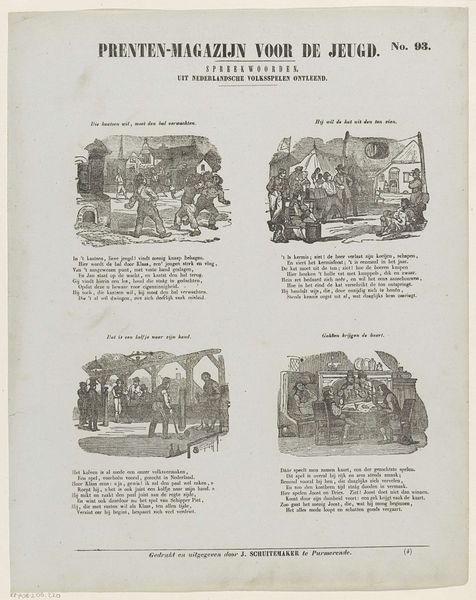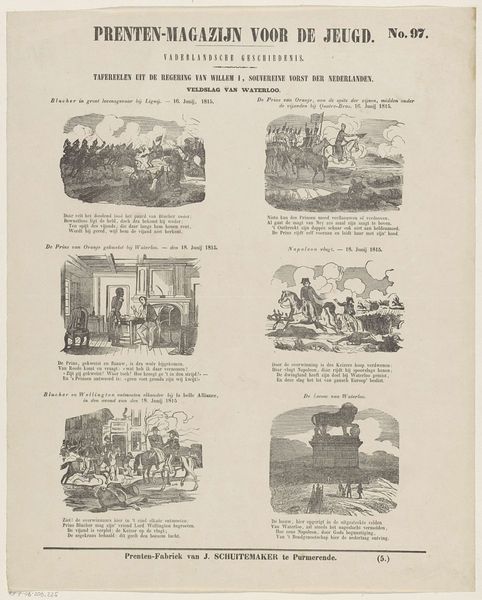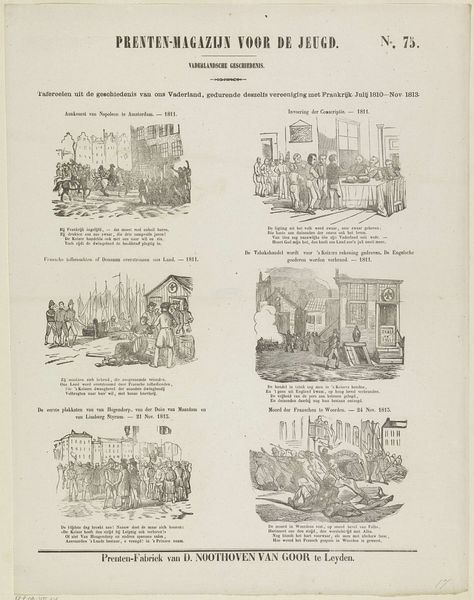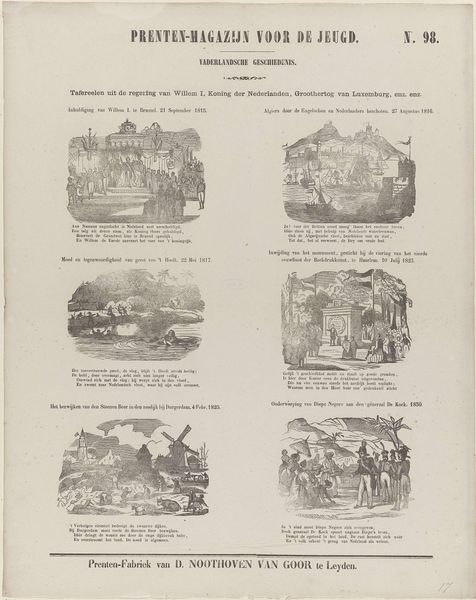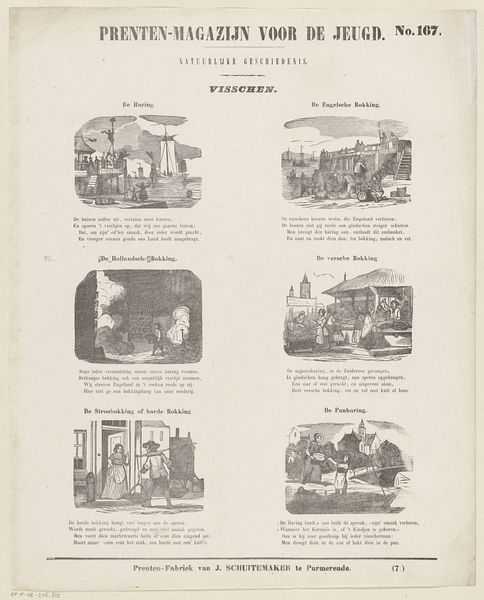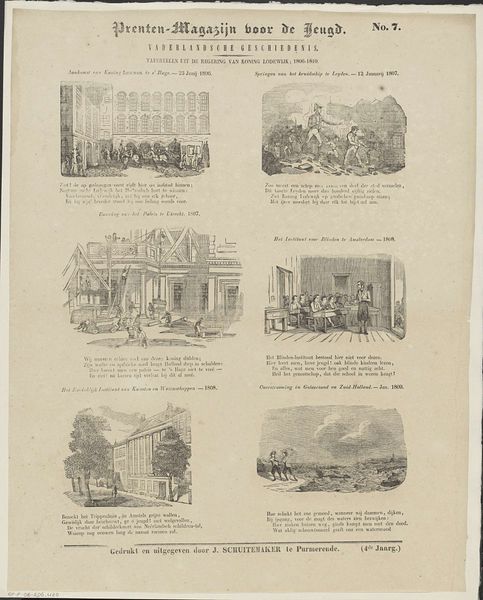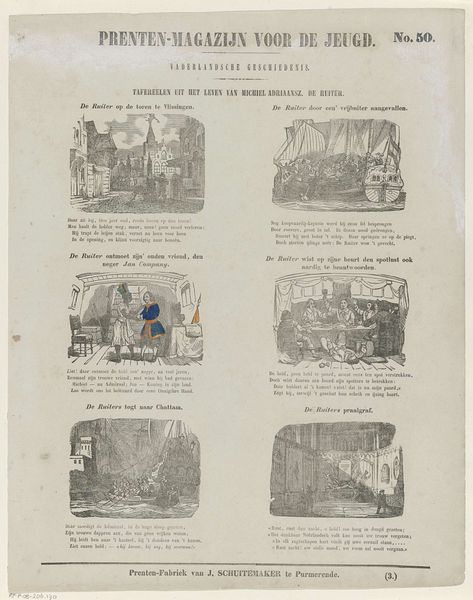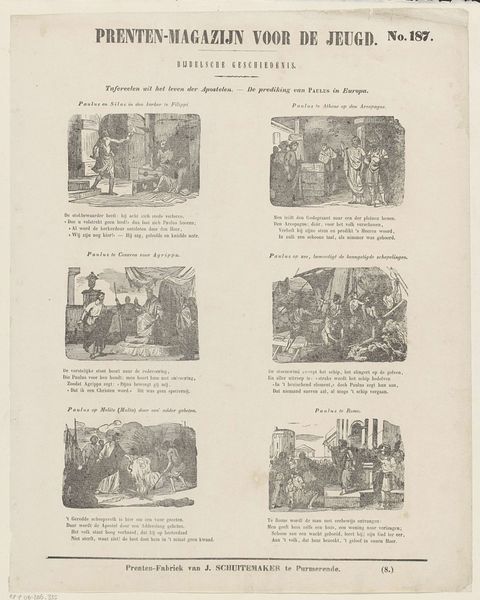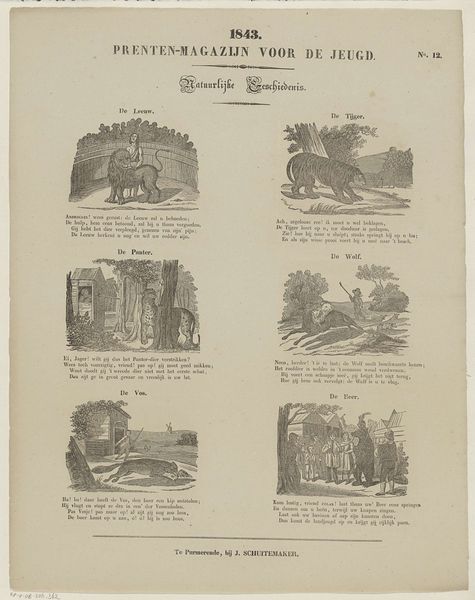
print, engraving
#
dutch-golden-age
# print
#
cityscape
#
genre-painting
#
engraving
#
realism
Dimensions: height 396 mm, width 323 mm
Copyright: Rijks Museum: Open Domain
Curator: Let's discuss "Straatverkopers," or "Street Vendors," an engraving created by Jan Schuitemaker in 1846. What are your initial impressions? Editor: The grayscale creates a feeling of historical weight. The compositions seem divided, yet I find myself drawn to the vignettes showing interactions between street sellers and ordinary individuals—who were the consumers? Curator: The artist himself, Jan Schuitemaker, was responsible for printing and publishing, producing this work using the method of engraving. What draws me in is that Schuitemaker made this for distribution amongst children. Its format as part of "Prenten-Magazijn voor de Jeugd"—a magazine for youth— suggests the engraving was not a singular object, but one produced within a network of objects circulated and consumed for children. Editor: Right, there’s an undeniable tension at play between its accessible form as children's media, and its detailed observations of daily life—genre-painting meets streetscape! Consider that some vignettes may celebrate labor while others may capture exploitation during rapid urbanization. It could also provide insights into class structures and their depiction in educational materials of the time. Curator: Exactly! We are compelled to reflect on how work and commercial activities get portrayed, distributed and therefore conceptualized for Dutch children through mass media production. It compels us to consider who has access and what values are embedded in such materials. Editor: It offers a lens through which we see identity and socioeconomic context merging. It brings into focus themes still relevant in art today: whose stories get told and by whom and for what ends? Curator: Yes, digging beneath this work as simple print expands our understanding of historical materiality and the labor practices. Editor: Agreed, while it initially presents as straightforward Dutch Realism, exploring its intersections of culture, consumption, and class truly enriches our interpretation.
Comments
No comments
Be the first to comment and join the conversation on the ultimate creative platform.
